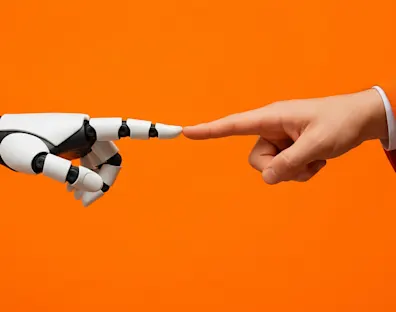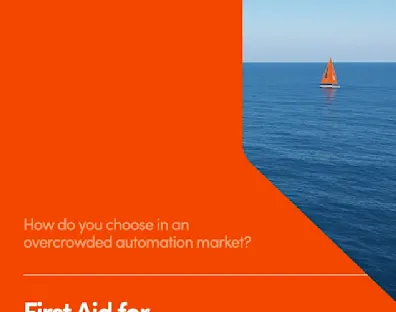

Robert Koot
Content Manager
3 min read
8 March 2023
The power of Robotic Process Automation (RPA) combined with Lean
Table of content
Robotic Process Automation (RPA); a perfect combination with Lean. Read more about the origin of Lean, why RPA fits well within a Lean concept and the advantages of this.
Lean production originated within the Toyota Production System in Japan. Within the Toyota Production System there was a continuous quest towards the maximization of customer value and the minimization of waste. The result of this quest? Lean! With the key goal of just in time delivery bij synchronous flow of processes and materials. Subsequently, tools and methods such as Kaizen, Kanban and Pull Production have originated out of the Lean intellectual legacy.
Given the success of Lean it is not surprising that it has been adopted widely in other industries. Especially within the construction- and service sector. The use of Lean within these industries creates room and need for technological innovations. With as a result the development of new tools, like RPA.
Become more Lean with RPA
Within Lean concepts processes are standardized as much as possible. By doing so, processes will become very efficient but also boring. At least boring for humans. Think about tasks that need to be performed very often at a high pace, without any room for error. For a robot, this is like music to their invisible ears.
Robots especially thrive in:
- Processing administrative tasks at high speed, without errors
- Working 24/7, without complaining
- Constantly carrying out tasks according to their requirements
These characteristics fit perfectly within Leans body of thought
Advantages of automation
A robot is a time saver for humans. And who doesn’t want that? With this saved up time employees can focus on more challenging tasks. Such as working out creative ideas, looking after colleagues and increasing customer satisfaction. These are all examples of tasks that cannot be executed by a robot. By making a division in robot- and human tasks, you are able to work much more efficiently and effectively.
A robot will take care of the administrative burden while the employee creates customer value.
Conclusion
A faster production for the same price often means more errors. If you want it to be faster and produce less errors, you will undoubtedly need more expensive technology or more people. RPA is the exception to that rule! This is because RPA perfectly taps into both the power of computers and humans.
A solution that promises so much can hardly help and will most likely be complicated and expensive. Right? Incorrect. The development of RPA low-code software platforms have made it possible to develop a complete robot in a short time (read: within a month). These robots work through the existing user interface, allowing the application landscape and underlying IT infrastructure to remain unchanged. This results in a short development time and minimal costs.
Once the first robot is up and running, additional processes can easily be set up. In this way, you can provide the robot with sufficient tasks to be able to work 24/7. You literally build a digital workforce, without making any changes to your operation model.

4 min read
BOAT is not a Swiss army knife, and that’s a good thing

3 min read
Why AI pilots often fail (and how you can prevent it)

1 min read
Choosing tools in an overcrowded automation market

4 min read
The character of AI: Why does ChatGPT feel different from Claude or Gemini?
